Are you a commercial building owner or manager searching for the best roof solution to protect your investment? Look no further! In this article, we will discuss the different types of roofs available for commercial buildings and help you determine which one is best suited for your specific needs. Whether durability, energy efficiency, or cost-effectiveness is your top priority, we’ve got you covered. So, let’s explore the options and find the perfect roof for your commercial building! When it comes to choosing the best roof for a commercial building, there are several important factors that you need to consider. The type of building, the climate in which the building is located, the cost, durability, maintenance requirements, energy efficiency, appearance, fire resistance, installation time, and warranty are all factors that should be taken into account. In this comprehensive article, we will explore each of these factors and discuss the different types of commercial roofing options available.
Building Type
The type of building you have will play a significant role in determining the best roof for your commercial property. Different roofing materials and systems are more suitable for certain types of buildings than others. For example, a flat roof may require different roofing materials and installation techniques compared to a sloped roof. It is important to consider the specific needs and requirements of your building when selecting a roofing system.
Climate
The climate in which your commercial building is located is another crucial factor to consider. Some roofing materials perform better in certain climates than others. For example, in areas with high winds or frequent hailstorms, a durable and impact-resistant roofing system may be more suitable. Additionally, the climate can also impact the energy efficiency of your roof, which can have long-term cost implications.
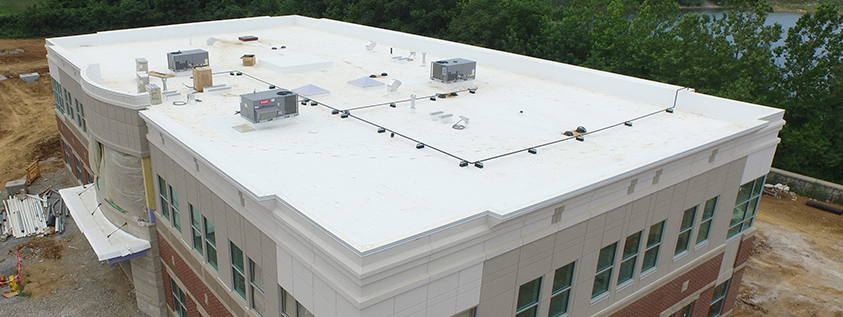
Cost
Cost is an important consideration for any commercial project, and roofing is no exception. The cost of materials, installation, and ongoing maintenance should all be taken into account. While it may be tempting to opt for the cheapest roofing option available, it is important to consider the long-term costs and benefits. Investing in a high-quality roofing system upfront may save you money in the long run by reducing maintenance and repair costs.
Durability
Durability is a critical factor when it comes to commercial roofing. A commercial property is often subjected to harsh weather conditions, heavy foot traffic, and the installation of rooftop equipment. Therefore, it is essential to choose a roofing system that can withstand these demands and provide long-lasting protection for your building.
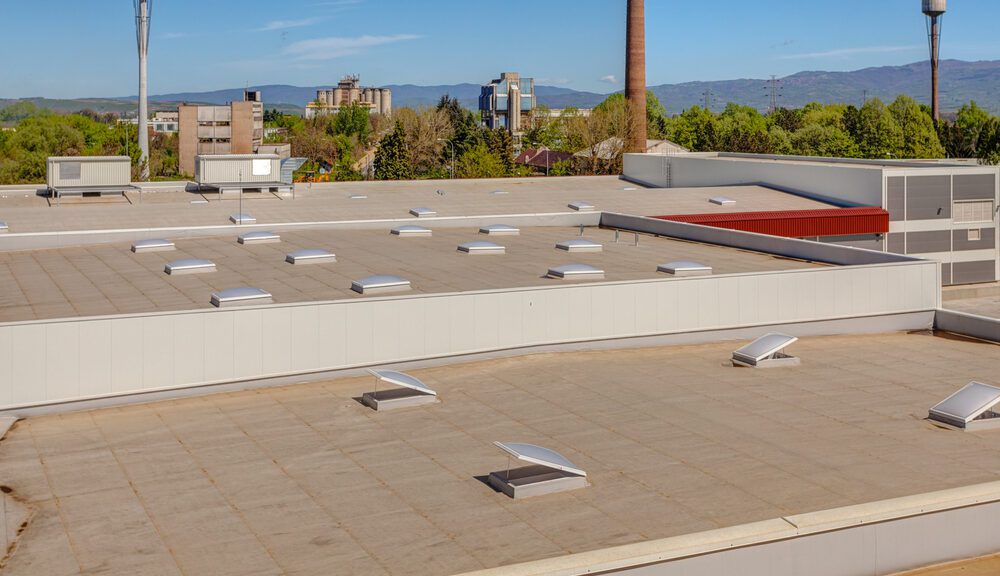
Maintenance
Regular maintenance is essential to prolong the lifespan of your commercial roofing system. Different roofing materials have different maintenance requirements, so it is important to choose a roofing system that aligns with your maintenance capabilities. Some roofing systems may require more frequent inspections and repairs than others, which can add to the overall cost of ownership.
Energy Efficiency
Energy efficiency is becoming increasingly important in commercial buildings. Energy-efficient roofing systems can help reduce heating and cooling costs, improve the comfort of building occupants, and contribute to environmental sustainability. Factors such as insulation, reflectivity, and ventilation all play a role in the energy efficiency of a roofing system.
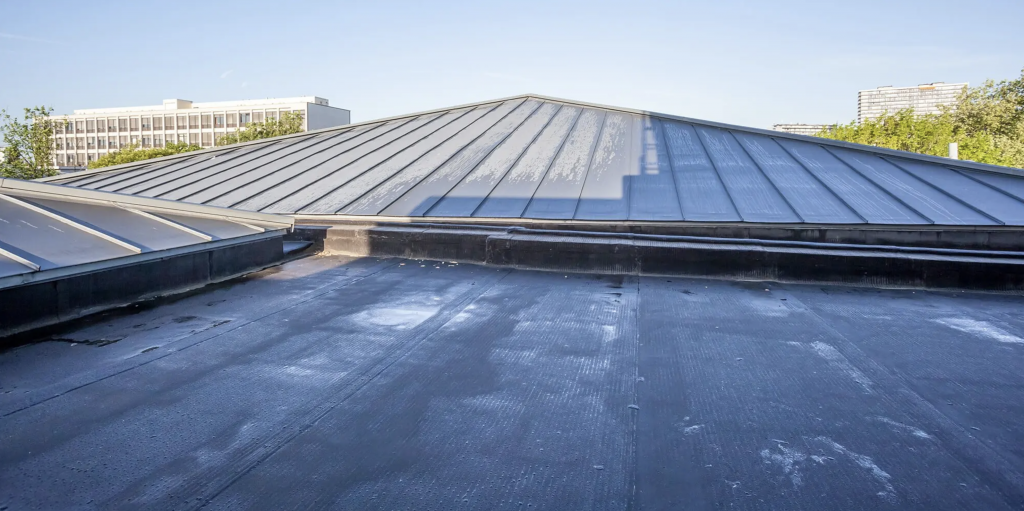
Appearance
The appearance of your commercial building can have a significant impact on its overall aesthetic appeal and curb appeal. The right roofing system can enhance the appearance of your building and make a positive first impression on clients and customers. Consider the architectural style of your building and choose a roofing material and color that complements the overall design.
Fire Resistance
Fire resistance is a critical factor to consider when selecting a commercial roofing system. Depending on the nature of your business and local building codes, certain roofing materials may be required to meet specific fire safety standards. Choosing a fire-resistant roofing material can provide added protection for your building and its occupants.
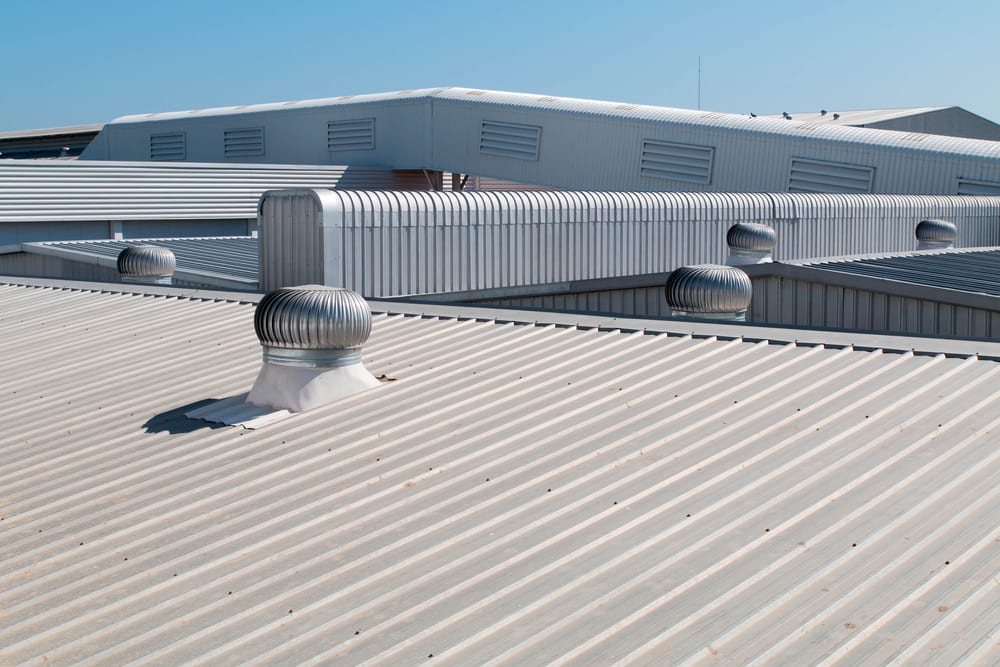
Installation Time
The installation time of a roofing system can impact the overall project timeline and budget. Some roofing materials require longer installation times, which can result in increased labor costs and potential disruptions to business operations. It is important to consider the installation time when selecting a roofing system and align it with your project schedule.
Warranty
A roofing warranty provides peace of mind and protection against potential roofing defects or failures. Different roofing manufacturers offer varying warranties, so it is important to carefully review the warranty terms and conditions. A comprehensive warranty can provide long-term protection for your investment and ensure that any potential issues are addressed by the manufacturer.
Now that we have discussed the important factors to consider when choosing a commercial roofing system, let’s explore the different types of commercial roofing options available. Each roofing system has its own unique characteristics, advantages, and disadvantages, so it is important to evaluate them in light of your specific project requirements.
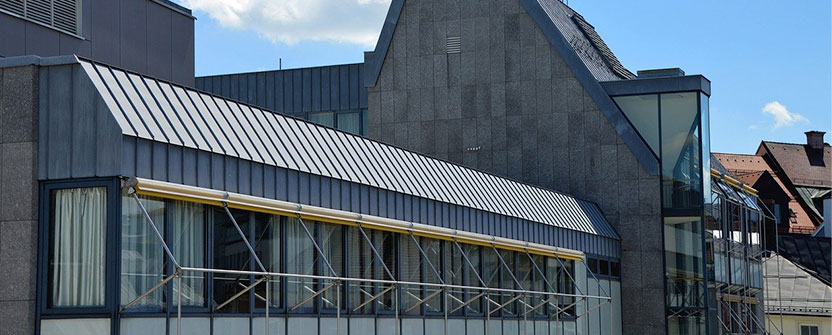
Built-Up Roofing (BUR)
Built-Up Roofing, commonly known as BUR, is one of the oldest and most traditional types of commercial roofing systems. BUR consists of multiple layers of roofing felts and asphalt or coal tar pitch. These layers are laminated together to create a durable and waterproof membrane.
Definition and Composition
A Built-Up Roofing system is composed of several layers of roofing felts that are alternated with layers of hot asphalt or coal tar pitch. The felts are typically made from organic or fiberglass materials and are saturated with asphalt or coal tar. The layers are then mopped or hot-melt applied onto the roof surface, creating a multi-layered membrane.
Pros
- BUR provides excellent waterproofing capabilities, making it an ideal choice for buildings in areas with heavy rainfall or snowfall.
- It has a long lifespan, typically ranging from 20 to 30 years, making it a cost-effective option in the long run.
- BUR is highly resistant to foot traffic and punctures, making it suitable for buildings with heavy rooftop equipment or frequent maintenance activities.
- It provides good UV protection and can reflect a significant amount of solar heat.
Cons
- BUR is a labor-intensive roofing system, requiring multiple layers and hot application methods, which can increase installation time and costs.
- It can be heavy, which may require additional structural support for certain buildings.
- The application of hot asphalt or coal tar pitch may emit odors and fumes during installation.
Suitable Buildings
BUR is well-suited for low-slope or flat commercial roofs. It is commonly used in commercial buildings such as warehouses, manufacturing facilities, and low-rise offices.
Installation Process
The installation of a Built-Up Roofing system involves several steps. First, the roof surface is prepared by removing any existing roofing materials and ensuring a clean and dry surface. Next, multiple layers of roofing felts are hot-mopped or cold-applied with an adhesive onto the roof surface. Finally, a top layer of asphalt or coal tar pitch is applied to create a waterproof membrane.
Maintenance
Regular inspection and maintenance are essential to ensure the longevity of a Built-Up Roofing system. Inspections should be performed annually to identify and address any potential issues such as cracks, blisters, or leaks. Additionally, periodic re-coating may be required to maintain the waterproofing capabilities of the system.
Modified Bitumen
Modified Bitumen roofing is a popular choice for commercial buildings that require a durable and flexible roofing system. It is a single-ply roofing membrane that incorporates modifiers such as SBS (Styrene-Butadiene-Styrene) or APP (Atactic Polypropylene) to enhance the performance of the asphalt.
Definition and Composition
Modified Bitumen is a type of asphalt roofing system that is made by integrating modifiers into the asphalt mix. These modifiers can provide additional flexibility, durability, and resistance to temperature fluctuations. Modified Bitumen roofing membranes are typically available in rolls and are installed using heat-welding or adhesive methods.
Pros
- Modified Bitumen roofing systems offer excellent durability and flexibility, making them suitable for buildings that experience significant temperature fluctuations or structural movement.
- They provide good resistance to foot traffic, punctures, and impact, making them a suitable option for buildings with frequent maintenance activities or heavy rooftop equipment.
- Modified Bitumen roofs have a long lifespan, typically ranging from 20 to 30 years, making them a cost-effective choice in the long run.
- They are relatively easy to install compared to other roofing systems, which can help reduce installation time and costs.
Cons
- Modified Bitumen roofs may require regular maintenance and inspections to ensure their longevity.
- They may have a higher initial installation cost compared to some other roofing systems.
- The heat-welding or adhesive installation methods may require specialized equipment and skilled labor.
Suitable Buildings
Modified Bitumen roofing systems are ideal for low-slope or flat commercial roofs. They are commonly used in commercial buildings such as retail stores, office buildings, and schools.
Installation Process
The installation process for Modified Bitumen roofing involves several steps. First, the roof surface is prepared by cleaning and drying it thoroughly. Then, the base sheet or underlayment is installed using either heat-welding or adhesive methods. The modified bitumen sheets are then installed using the same methods, and the seams are sealed to create a watertight membrane.
Maintenance
Regular maintenance is crucial to maximize the lifespan of a Modified Bitumen roof. Inspections should be conducted annually to identify any potential issues such as cracks, open seams, or blistering. Additionally, periodic cleaning and re-coating may be required to maintain the membrane’s waterproofing capabilities and reflectivity.
EPDM Roofing
EPDM (Ethylene Propylene Diene Monomer) roofing is a popular choice for commercial properties due to its excellent durability, versatility, and cost-effectiveness. It is a synthetic rubber roofing membrane that is known for its superior weather resistance and resistance to UV radiation.
Definition and Composition
EPDM roofing is made from a synthetic rubber compound that is composed of ethylene, propylene, and a small amount of diene monomer. The single-ply membrane is available in sheets or rolls and is typically installed using adhesives, mechanical fasteners, or ballast.
Pros
- EPDM roofing is highly durable and can withstand a wide range of weather conditions, including hail, high winds, and extreme temperatures.
- It has a long lifespan, typically lasting 30 years or more, making it a cost-effective option in the long run.
- EPDM is resistant to UV radiation and can provide excellent thermal insulation, resulting in potential energy savings.
- It is relatively easy to install and repair, which can help reduce installation time and maintenance costs.
Cons
- EPDM roofing requires regular inspections and maintenance to identify and address any potential issues such as leaks or membrane damage.
- The dark color of EPDM roofs can absorb heat, potentially increasing cooling costs in warm climates.
- The seams of EPDM roofs may be susceptible to damage if not properly sealed or maintained.
Suitable Buildings
EPDM roofing is suitable for a wide range of commercial buildings, including offices, retail stores, warehouses, and schools. It is commonly used on low-slope or flat roofs but can also be used on sloped roofs with appropriate design considerations.
Installation Process
The installation process for EPDM roofing involves several steps. First, the roof surface is prepared by cleaning and drying it thoroughly. The membrane is then laid out onto the roof and secured using adhesive, mechanical fasteners, or ballast. Seams are typically joined using adhesive or heat-welding methods.
Maintenance
Regular maintenance is essential to maximize the lifespan and performance of an EPDM roofing system. Inspections should be conducted annually to check for any signs of damage, such as membrane tears, open seams, or punctures. Additionally, cleaning and occasional re-coating may be necessary to maintain the integrity and appearance of the membrane.
TPO Roofing
TPO (Thermoplastic Olefin) roofing is a popular option for commercial buildings due to its excellent durability, energy efficiency, and ease of installation. It is a single-ply roofing membrane made from a blend of polymers and reinforcing scrim, providing excellent strength and flexibility.
Definition and Composition
TPO roofing is composed of a combination of polypropylene, ethylene-propylene rubber, and reinforcing scrim. The membrane is typically available in rolls and is installed using heat-welding or adhesive methods.
Pros
- TPO roofing offers excellent durability and resistance to weathering, making it suitable for buildings in all climates.
- It provides exceptional energy efficiency by reflecting a significant amount of solar heat, which can result in lower cooling costs.
- TPO roofs have a long lifespan, typically ranging from 20 to 30 years, making them a cost-effective choice in the long run.
- They are relatively easy to install and repair, which can help minimize installation time and maintenance costs.
Cons
- TPO roofs may require regular inspections and maintenance to address any potential issues such as membrane damage or seam failures.
- The heat-welding or adhesive installation methods may require specialized equipment and skilled labor.
- The selection of a reputable TPO manufacturer is crucial to ensure product quality and longevity.
Suitable Buildings
TPO roofing is suitable for a wide range of commercial buildings, including retail stores, offices, warehouses, and schools. It is commonly used on low-slope or flat roofs but can also be used on sloped roofs with proper design considerations.
Installation Process
The installation process for TPO roofing involves several steps. First, the roof surface is prepared by cleaning and drying it thoroughly. Then, the membrane is unrolled and secured using adhesive, heat-welding, or mechanical fasteners. The seams are joined using heat-welding or adhesive methods to create a watertight membrane.
Maintenance
Regular inspections and maintenance are essential to ensure the longevity and performance of a TPO roofing system. Inspections should be conducted annually to check for any signs of damage or seam failures. Additionally, periodic cleaning and re-coating may be required to maintain the reflective properties and integrity of the membrane.
PVC Roofing
PVC (Polyvinyl Chloride) roofing is a reliable and versatile option for commercial buildings that require a high level of durability and energy efficiency. It is a single-ply roofing membrane made from a strong and flexible plastic material.
Definition and Composition
PVC roofing is composed of a plastic polymer known as polyvinyl chloride. The membrane is typically available in rolls and is installed using heat-welding or adhesive methods.
Pros
- PVC roofing offers exceptional durability and resistance to weathering, making it suitable for buildings in all climates.
- It provides excellent fire resistance, making it a safe option for commercial buildings.
- PVC roofs have a long lifespan, typically lasting 20 to 30 years or more, making them a cost-effective choice in the long run.
- They are highly reflective, which can contribute to energy savings by reducing cooling costs.
Cons
- PVC roofs may require regular inspections and maintenance to address any potential issues such as membrane damage or seam failures.
- The heat-welding or adhesive installation methods may require specialized equipment and skilled labor.
- The selection of a reputable PVC manufacturer is crucial to ensure product quality and longevity.
Suitable Buildings
PVC roofing is suitable for a wide range of commercial buildings, including retail stores, offices, warehouses, and schools. It is commonly used on low-slope or flat roofs but can also be used on sloped roofs with appropriate design considerations.
Installation Process
The installation process for PVC roofing involves several steps. First, the roof surface is prepared by cleaning and drying it thoroughly. Then, the membrane is unrolled and secured using adhesive, heat-welding, or mechanical fasteners. The seams are joined using heat-welding or adhesive methods to create a watertight membrane.
Maintenance
Regular inspections and maintenance are essential to ensure the longevity and performance of a PVC roofing system. Inspections should be conducted annually to check for any signs of damage or seam failures. Additionally, periodic cleaning and re-coating may be required to maintain the reflective properties and integrity of the membrane.
Metal Roofing
Metal roofing is a versatile and durable option for commercial buildings that require a long-lasting and low-maintenance roofing system. It is available in various materials such as steel, aluminum, and copper, offering different aesthetics and performance characteristics.
Definition and Composition
Metal roofing consists of metal panels or shingles that are installed on the roof surface. The panels are typically made from steel, aluminum, or copper and are available in a wide range of colors and finishes.
Pros
- Metal roofing offers exceptional durability and can last 40 to 70 years or more with proper maintenance.
- It provides excellent resistance to weathering, including high winds, hailstorms, and heavy snow.
- Metal roofs are highly energy-efficient and can contribute to significant energy savings by reflecting solar heat.
- They require minimal maintenance and are resistant to fire, insects, and rot.
Cons
- Metal roofs can be more expensive upfront compared to some other roofing systems.
- The installation of metal roofing requires specialized equipment and skilled labor, which can increase installation costs.
- The expansion and contraction of metal panels due to temperature fluctuations may cause noise issues if not properly insulated.
Suitable Buildings
Metal roofing is suitable for a wide range of commercial buildings, including industrial facilities, retail stores, offices, and schools. It is commonly used on steep-slope roofs but can also be used on low-slope or flat roofs with appropriate design considerations.
Installation Process
The installation process for metal roofing varies depending on the specific type of metal and profile selected. Generally, the roof surface is prepared by ensuring proper ventilation and insulation. Then, the metal panels or shingles are installed using mechanical fasteners or a standing seam installation system. Flashings are installed around roof penetrations and edges to ensure waterproofing.
Maintenance
Metal roofing requires minimal maintenance compared to other roofing systems. Regular inspections should be conducted to check for any loose or damaged panels, as well as potential issues with flashings or sealants. Additionally, periodic cleaning and coating may be required to maintain the appearance and protective properties of the metal.
Green Roofing
Green roofing, also known as living roofing or eco-roofing, is a sustainable and environmentally friendly option for commercial buildings. It involves the installation of vegetation and plants on the roof surface, providing numerous benefits such as energy efficiency, stormwater management, and improved air quality.
Definition and Composition
Green roofing consists of several components, including a waterproofing membrane, root barrier, drainage layer, growing medium, and vegetation. The membrane is typically made from PVC or another waterproof material, while the growing medium is composed of lightweight soil or other organic materials.
Pros
- Green roofing provides excellent insulation, reducing heating and cooling costs and improving energy efficiency.
- It helps manage stormwater runoff by retaining rainwater and reducing the load on drainage systems.
- Green roofs can improve air quality by acting as a natural filter, absorbing pollutants and releasing oxygen.
- They can extend the lifespan of the roofing membrane by protecting it from UV radiation and temperature fluctuations.
Cons
- Green roofing systems can be more expensive upfront compared to traditional roofing systems due to additional materials and installation requirements.
- They require regular maintenance, including watering, weeding, and pruning, to ensure the health and longevity of the vegetation.
- The additional weight of a green roof may require structural reinforcement for certain buildings.
Suitable Buildings
Green roofing is suitable for a wide range of commercial buildings, including offices, retail stores, and institutional facilities. It is commonly used on low-slope or flat roofs but can also be implemented on sloped roofs with appropriate design considerations.
Installation Process
The installation process for green roofing involves several steps. First, the roof surface is prepared by ensuring proper waterproofing and the installation of a root barrier. Then, a drainage layer and growing medium are added onto the roof surface. Finally, the vegetation, including grass, plants, or even trees, is planted into the growing medium.
Maintenance
Regular maintenance is crucial for the success of a green roofing system. The vegetation should be regularly watered, weeded, and pruned to maintain its health and prevent the growth of invasive species. Additionally, periodic inspections should be performed to check for any signs of leaks or damage to the roofing membrane.
Solar Roofing
Solar roofing is an innovative and sustainable option for commercial buildings that want to harness the power of the sun to generate clean, renewable energy. It involves the integration of solar panels into the roofing system, providing numerous environmental and cost-saving benefits.
Definition and Composition
Solar roofing consists of solar panels or solar shingles that are integrated into the roof surface. The panels are typically made from photovoltaic cells, which convert sunlight into electricity. The solar panels can be installed on various types of roofing systems, including metal, shingle, or tile.
Pros
- Solar roofing allows you to generate clean, renewable energy and reduce your reliance on traditional energy sources.
- It can significantly reduce electricity costs by generating your own power and potentially allowing you to sell excess electricity back to the grid.
- Installing solar roofing can qualify you for various financial incentives and tax credits offered by local, state, or federal governments.
- Solar panels have a long lifespan, typically lasting 25 to 30 years or more, making them a cost-effective investment in the long run.
Cons
- Solar roofing systems can be more expensive upfront compared to traditional roofing systems due to the cost of the solar panels and their installation.
- The installation of solar panels may require specialized equipment and skilled labor, which can increase installation costs.
- The positioning and availability of sunlight may impact the energy generation capabilities of a solar roofing system.
Suitable Buildings
Solar roofing can be installed on a wide range of commercial buildings, including offices, retail stores, manufacturing facilities, and warehouses. It is compatible with various types of roofing systems, including flat or sloped roofs.
Installation Process
The installation process for solar roofing involves several steps. First, the roof surface is evaluated to determine its suitability for solar panel installation. If necessary, the roof may undergo any required repairs or modifications. Then, the solar panels are installed on the roof using a combination of mounting hardware and a watertight system to prevent leaks. Finally, the electrical connections are made, and the system is connected to the building’s electrical infrastructure.
Maintenance
Solar roofing systems generally require minimal maintenance compared to other roofing systems. Regular inspections should be conducted to ensure the panels are clean, free of debris, and functioning properly. Additionally, periodic cleaning may be required to remove any dirt or dust that can reduce the system’s efficiency.
Spray Foam Roofing
Spray foam roofing is a unique and efficient option for commercial buildings that require a seamless, high-performance roofing system. It involves the application of a liquid foam material that expands and hardens to create a watertight and durable roofing membrane.
Definition and Composition
Spray foam roofing is composed of a two-part liquid material: an isocyanate and a polyol resin. When these two components are mixed and applied to the roof surface, they expand and harden to form a seamless foam insulation layer.
Pros
- Spray foam roofing provides excellent insulation properties, reducing heating and cooling costs and improving energy efficiency.
- It forms a seamless and monolithic roofing membrane, eliminating the potential for leaks and water infiltration.
- Spray foam roofs can be installed over existing roofing systems, reducing the need for tear-off and minimizing waste.
- The lightweight nature of the spray foam material reduces the structural load on the building.
Cons
- Spray foam roofing requires skilled installers to ensure proper application, which may increase installation costs.
- The spray foam material can be sensitive to UV radiation and may require a protective coating to prevent degradation.
- The maintenance of a spray foam roofing system typically requires periodic inspections and re-coating to maintain its integrity.
Suitable Buildings
Spray foam roofing is suitable for a wide range of commercial buildings, including warehouses, manufacturing facilities, and office buildings. It is commonly used on low-slope or flat roofs.
Installation Process
The installation process for spray foam roofing involves several steps. First, the roof surface is prepared by ensuring it is clean and dry. Next, the spray foam material is mixed and applied to the roof surface using a spray gun. The foam expands and hardens, creating a seamless insulation layer. Finally, a protective coating may be applied to protect the foam from UV radiation and provide additional durability.
Maintenance
Regular maintenance is essential to ensure the longevity and performance of a spray foam roofing system. Inspections should be conducted periodically to check for any signs of damage, such as cracks or blistering. Additionally, re-coating may be necessary to maintain the protective properties of the foam and extend its lifespan.
Single-Ply Membrane Roofing
Single-ply membrane roofing is a popular choice for commercial buildings that require a lightweight, flexible, and cost-effective roofing system. It involves the installation of a single layer of synthetic material that provides excellent waterproofing and durability.
Definition and Composition
Single-ply membrane roofing is composed of a single layer of synthetic material, typically made from thermoplastic or thermoset compounds. The membrane is available in rolls and is installed using various methods, including heat-welding, adhesive, or mechanical fastening.
Pros
- Single-ply membrane roofing offers excellent durability and resistance to weathering, making it suitable for buildings in all climates.
- It provides exceptional waterproofing capabilities, protecting the building from potential leaks and water infiltration.
- Single-ply membranes are lightweight and easy to install, which can help reduce installation time and costs.
- They are available in a wide range of colors and finishes, allowing for customization to match the building’s aesthetic requirements.
Cons
- Single-ply membrane roofing may require regular inspections and maintenance to identify and address any potential issues, such as membrane damage or seam failures.
- The installation methods may vary depending on the specific type of membrane selected, requiring specialized equipment and skilled labor.
- The selection of a reputable manufacturer is crucial to ensure product quality and longevity.
Suitable Buildings
Single-ply membrane roofing is suitable for a wide range of commercial buildings, including retail stores, offices, warehouses, and schools. They are commonly used on low-slope or flat roofs but can also be used on sloped roofs with appropriate design considerations.
Installation Process
The installation process for single-ply membrane roofing varies depending on the specific type of membrane selected. Generally, the roof surface is prepared by ensuring proper ventilation and insulation. Then, the membrane is unrolled and secured using adhesive, heat-welding, or mechanical fasteners. The seams are joined using heat-welding or adhesive methods to create a watertight membrane.
Maintenance
Regular maintenance is crucial to maximize the lifespan and performance of a single-ply membrane roofing system. Inspections should be conducted annually to check for any signs of damage or seam failures. Additionally, periodic cleaning and re-coating may be required to maintain the integrity and appearance of the membrane.
In conclusion, selecting the best roof for your commercial building requires careful consideration of various factors such as building type, climate, cost, durability, maintenance, energy efficiency, appearance, fire resistance, installation time, and warranty. By evaluating these factors and understanding the characteristics of different roofing systems, you can make an informed decision that meets the specific needs and requirements of your commercial property. Whether you choose Built-Up Roofing, Modified Bitumen, EPDM, TPO, PVC, Metal, Green, Solar, Spray Foam, or Single-Ply Membrane roofing, each option has its own unique advantages and disadvantages. With proper installation, maintenance, and care, your selected roofing system can provide long-lasting protection and contribute to the overall success of your commercial building.